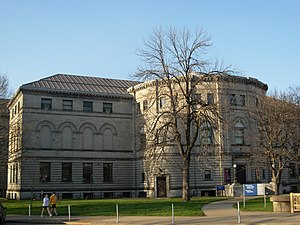The Allegheny County library system is, in this writer’s humble opinion, the greatest single asset the Pittsburgh region can boast of. The libraries are an inexhaustible source of entertainment, knowledge, and wisdom, and because all of the libraries are now connected and materials can be requested from any library within the system, travel expenditures are limited to the library that is most convenient for one to access.
I would estimate that 99% of the novels I have attempted to seek out are contained within the system. With non-fiction, excepting extremely “niche” and academic publications, the rate would be somewhat similar (as an example, although I could not locate Robert Carringer’s book on Orson Welles’ version of “The Magnificent Ambersons,” given that it is tailored for a very limited audience of film historians and Welles buffs, I was able to track down dozens of other books relating to Welles and the film in question).
Media is somewhat less easy to track down (as might be suspected), but one might be surprised at the obscure and otherwise hard-to-find titles that are contained within the library system. Back to Welles, although “Chimes At Midnight” and “The Magnificent Ambersons” were unavailable on DVD (both being foreign-only releases), I was able to find every other major Welles movie on DVD, some in their “deluxe” versions (three-disc editions of “Touch of Evil” and “Mr. Arkadin”). Given that most of Welles’ non-“Citizen Kane” work is all but unknown to the general public, this is a reassuring situation.
In general, the libraries seem to be very good at keeping up with new releases; if you don’t want to spend the $6.50 for a movie ticket and can wait the ten or so months it will take for the movie to be released on DVD, the library to acquire a copy (or 75), and one of those copies to make its way through the holding queue to you, this is an excellent way to save money.
Oakland Branch:
The main branch of the Carnegie library system, located in Oakland, is a monstrosity of a building. Spanning two floors and an almost ridiculous array of side wings, narrow hallways, and “submarine rooms” (i.e., rooms that are as compact as, well, a submarine), a map is almost required in order to navigate the building and to locate whatever text or media one may be pursuing.
Main’s collection is so massive that the Library of Congress filing system is used, making it something of a challenge for readers used to the more common Dewey Decimal System. In fact, casual browsing is extremely difficult at the Main branch, simply because the collection is so overwhelmingly large. That said, if specific titles or subsets of works are desired, the Main library is an invaluable resource. While other libraries may have, at best, a handful of texts on a given subject, the Main library might have an entire bookcase stuffed with relevant information.
The library even contains a Depository, which contains a wealth of journal articles and other academic resources; as one might expect, viewing these materials requires a bit more legwork than simply walking into the library and finding the appropriate shelf. Instead, a formal request must be filed.
Of course, with the online request system, the contents of the Main library are essentially accessible from any library within the Allegheny County system (save materials in the Depository and some other restricted materials). However, the ambience of the Main library is unique; the architecture, the reading areas, the winningly schizophrenic atmosphere as one traverses through different rooms (take a visit; you’ll understand). It can be entertaining to simply walk around the library, even if one doesn’t intend to pick up a book or flip through the endless drawers of CD’s. Simply being faced with that sheer volume of material can be inspiring, in an odd way.



